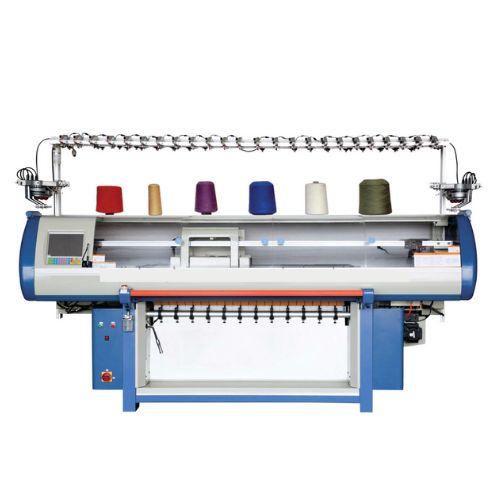Call us
+91 9769753185 / +91 8692834700
E-mail us
surajengnrgworks@gmail.com

Computerized Knitting Machine (3 system )
| Machine Type | Computerized |
| Model | 3 System |
| Machine Gauges (G) | 7GG - 14G |
| Knitting product type | Collar, Sweater, Shoes |
| Knitting Width | 44 - 80 inch |
| Origin | Made in China |
Best Computerized Knitting Machine in India
The Computerized Knitting Machine represents a remarkable leap forward in the textile industry, integrating technology and automation to revolutionize fabric production. Unlike traditional knitting machines that relied on manual labor and limited design options, this cutting-edge device combines advanced computer control, electronic sensors, and software to create fabrics with unmatched precision, efficiency, and versatility.
At the core of the computerized knitting machine lies its ability to interpret digital designs. Designers can create intricate patterns, textures, and color combinations using specialized software or computer-aided design tools. The machine then autonomously executes these designs, ensuring every stitch is formed accurately and consistently. This precision results in high-quality fabrics that meet exact specifications, catering to the demands of designers and manufacturers alike.
Automation is a driving force behind the machine's efficiency. Once the digital design is transferred to the machine, it operates autonomously, drastically reducing production time and labor costs. This streamlined process enables textile manufacturers to meet tight deadlines and respond to rapidly changing market demands, boosting productivity and profitability.
The versatility of the computerized knitting machine opens doors to boundless creativity. Designers can experiment with various yarn types, colors, and stitch techniques, offering unparalleled freedom in fabric design. This flexibility allows for the creation of custom-made fabrics, catering to individual customer preferences and fostering deeper connections between consumers and products.
Beyond its creative potential, the computerized knitting machine addresses sustainability concerns in the textile industry. By minimizing material waste and optimizing resource utilization, it contributes to eco-friendly fabric production. The machine's automation also reduces energy consumption, making it an essential asset in the quest for greener manufacturing practices.
Moreover, the integration of computerized knitting machines helps bridge the industry's skill gap. While traditional knitting relied on specialized expertise, this advanced technology requires knowledge of digital design and programming. Consequently, the machine democratizes textile production, encouraging a wider pool of talent to participate in the industry and contributing to its long-term growth.
Conclusion - Computerized Knitting Machine
In conclusion, the Computerized Knitting Machine represents a transformative force in the textile industry. Its precision, efficiency, versatility, and sustainability have revolutionized fabric production, empowering designers and manufacturers to produce exceptional fabrics with unprecedented speed and creativity. As this technology continues to evolve, it promises a dynamic and sustainable future for the textile industry, catering to the ever-evolving needs of consumers and pushing the boundaries of fabric design and innovation.
